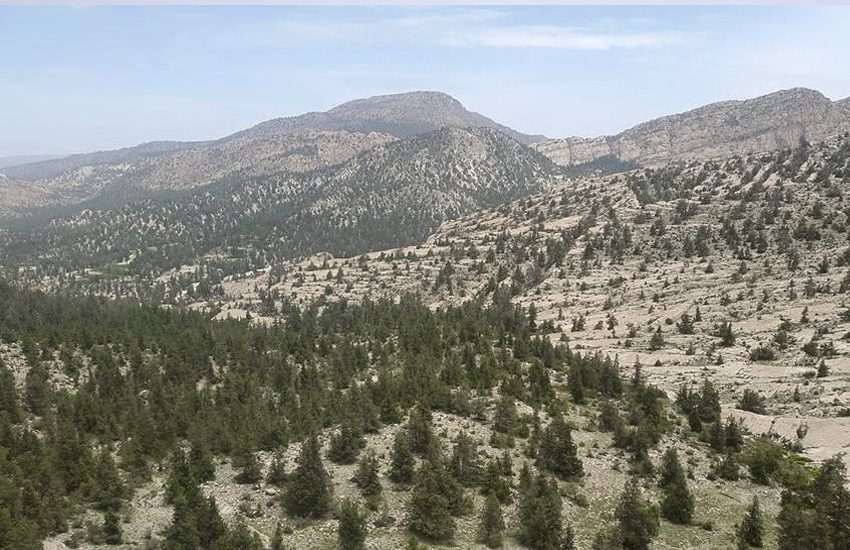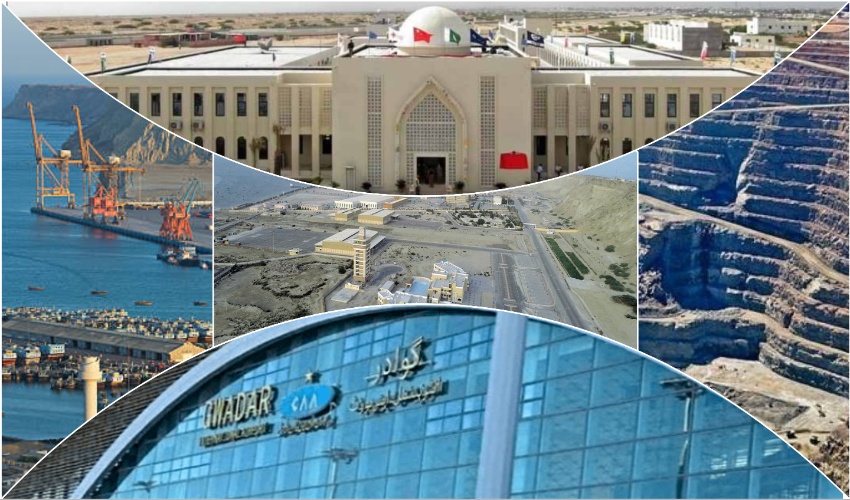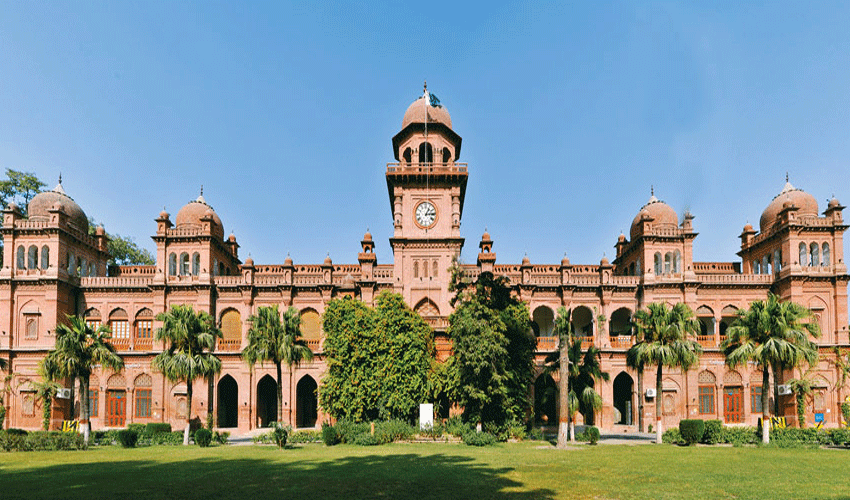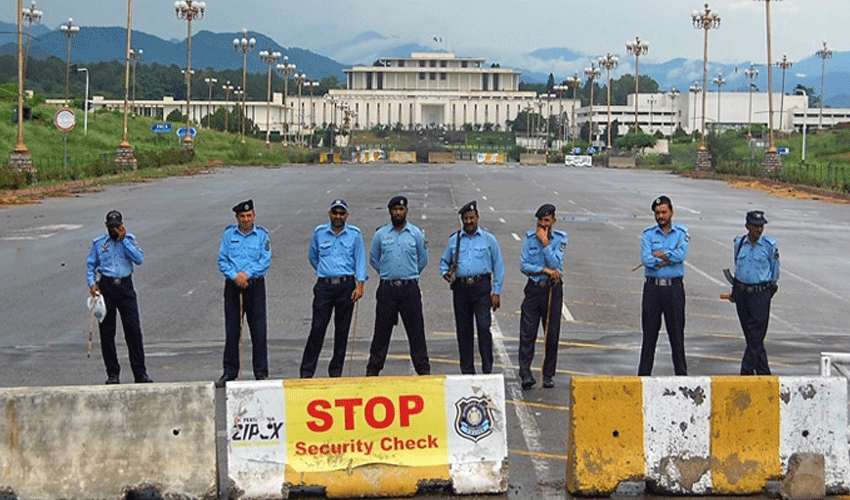In Balochistan, there are dozens of famous ancient forests, and there are wild olive trees in the mountainous region, in addition to this, due to the mild climate, different types of valuable trees grow in this province, among which the prominent trees are wild olives, which naturally grow in the mountains of Balochistan. They are frequently present in the regions.
Valuable juniper and palos trees are also prominent here. These historical trees have countless benefits. The oil obtained from wild olive trees can be used as food and medicine, and it is a long-lived tree with low water dependence that is environmentally friendly.
The friend is also the oil obtained from the juniper tree, various dangerous diseases such as cancer, snakebite medicine and many medicines are made. Above all, historical forests help prevent natural disasters, including preventing the effects of the environment, but now these historical forests are ending from Balochistan.
In the upper regions of Balochistan, people are compelled to cut historical trees due to severe cold. Jan Muhammad, who belongs to Moolah, a hilly area of Khuzdar, Muhammad Jan said to SAMAA that earns his livelihood by rearing cattle in the hilly areas. I cut wood from the forest, including grazing, which increases my income.
There is no demand for wood in summer, while in most areas of Balochistan, people use wood instead of gas to protect them from the cold due to the unavailability or high cost of gas. In comparison to gas, the cost and risk of using wood is less and the long-term benefit is more. That is why I cut down natural forests in winter so that my house can meet its expenses in winter. People also use firewood for cooking, as evidenced by the large timbers in cities where thousands of valuable pieces of wood can be found in each timber."
He added that "I have not been stopped by any person, but there is a chain of cutting wood in other hilly areas. First, the forest or mountain owner hires a woodcutter to cut the forest in his area every year while forbidding the cutting down of small trees in order to get more wood from the smaller trees by making them bigger. After harvesting, the dry wood is immediately sent to the cities for sale, while the green wood is waiting for drying and this work is done only in winter because the demand for wood is high in winter and the wood is dry in winter. and easily harvested due to cold weather”.
He added that "I have not been stopped by any person, but there is a chain of cutting wood in other hilly areas. First, the forest or mountain owner hires a woodcutter to cut the forest in his area every year while forbidding the cutting down of small trees in order to get more wood from the smaller trees by making them bigger.
After harvesting, the dry wood is immediately sent to the cities for sale, while the green wood is waiting for drying and this work is done only in winter because the demand for wood is high in winter and the wood is dry in winter. and easily harvested due to cold weather”.
In response to a question, he said that "if the government had taken action, firewood would not be sold publicly in Quetta, the provincial capital, firewood is sold in Quetta despite gas, but there is no gas in the rest of the areas, there is forest firewood. Buying and selling is more booming.
There are dozens of timbers in Khuzdar city, where dry wood of khat, mulberry, myrtle, mulberry, myrrh, perpok, curry and other trees known in the local language are sold.Muhammad Sadiq, a wood seller, said, “In forest department operations Harvesting is going on in the mountainous areas where they do not have access, the forests have been lost. But there are many hilly areas where people do not cut forests for fear of tribal elders".
There are historical forests in different districts of the province, Ziarat, Zhob, and Shirani, in this way there are olive and other forests in the rest of the areas. These wild areas are located at an altitude of 16000 feet above sea level, due to which the cold is more here and there are also unique forests. If we look at their history, it is estimated that the forests here are about 5000 to 7000 years old
In Balochistan, there is no work on forests, there is no forest statistics and history at the official level۔ Naeem Javed Muhammad Hasni, who works as Conservator of Forests in the Department of Forests, Wildlife (BFWD) in Balochistan, conducts forest research in the province. According to their research and data, due to its vast area, low human population and diverse landscapes, Balochistan has the potential of wilderness for diverse flora and fauna. If we look at the details, immense wildlife is alive because of the trees, they include 71 species of animals, 356 species of birds, 94 species of reptiles and forests also play an important role in the survival of freshwater fish. Forest-dwelling animals include Suleiman Markhor, wild cat, Chaltan Markhor (wild goat), common leopard, Sindh ibex, Asiatic jackal, Afghan urel, hyena, chinkara gazelle, wolf, black bear and honey badger.
There are three forest sites in Balochistan which are under the supervision of National Parks, the 27,400 hectare Hazarganji Chiltan Park in Quetta is one of them where Chiltan Markhors are protected.
Hangul National Park has an area of 619,100 hectares, which has been established for the protection of Sindh ibex, wild sheep and chinkara gazelle. Ziarat National Park with a total area of 16,997 hectares has been established for the protection of Sulaiman Markhor and valuable flora and fauna.
Apart from these places, there are numerous natural forests in Balochistan which are neglected. The cities of the province, Khuzdar, Kalat, Ziarat, Kharan, Gwadar, Kech, have immense forests where wild animals are found and these districts consist of 967,608 hectares. There are forests and animal sanctuaries and government attention is needed on these areas because these forests are decreasing day by day and local people are cutting rapidly.
According to the World Bank's Green Pakistan Forests report, there are 498,906 hectares of natural forests in Balochistan, which is 1.4% of the total area of the province and 11.1% of the total forests of Pakistan. But according to the data obtained from the Pakistan Bureau of Statistics through the RTI Act, 4.06% of the total area in Balochistan consists of forests.
Balochistan is a dry province in terms of climate where there are more natural forests and if plantations are done here, plantations are not very effective due to lack of water and water for plantations is obtained from the ground through tube wells. Due to which the underground water level is decreasing every other day, and on the other hand, people are rapidly cutting down forests that have been inhabited for centuries and thousands of years old trees like juniper are also being cut down which are difficult to transplant. Juniper forests in the world, one is in the western states of America and the other is in the region of Pakistan. Such historical and unique trees play an important role in making the environment favorable.
According to the Global Forest Watch website, from 2001 to 2022, Balochistan has lost 2 hectares of tree cover, which is a 0.72 percent decrease in tree cover since 2000, which equates to 221 tons of carbon dioxide emissions.According to the Global Forest Watch website, from 2001 to 2022, Balochistan has lost 2 hectares of tree cover, which is a 0.72 percent decrease in tree cover since 2000, which equates to 221 tons of carbon dioxide emissions.As of 2010, the Kalat area in Balochistan represented 55% of all trees. Kalat had the highest tree cover per hectare. Due to the hot weather in Balochistan, the forest fire season usually starts from mid-April and lasts for about 13 weeks.
Fire alerts were reported between 26 September 2022 and 25 September 2023 due to last year's warm weather. The year 2022 saw the highest number of 16 fire incidents when 154 hectares of forests were reduced to ashes. 40% of the forests were affected where there were Chalghoze plantations and this is considered to be the first large forest of Chalghoze in the world. There are also more than 10 million pine trees in which the value of each one is estimated at 20 thousand rupees. Pakistan has lost 63.2 hectares of tree cover in 2021. Which is reported by Global Forest.
According to the Climate Risk Country Profile Report released by the World Bank in 2021, Pakistan faces the risk of many natural disasters in the world, which is ranked 18th out of 191. According to the report, in 2015, more than 65,000 people were hospitalized and 1200 people died due to heat stroke in Pakistan۔
. The rapid change in the environment is a threat to human life. The above-mentioned World Bank report states that the global temperature has increased by 0.61 degrees Celsius from 1986 to 2005. In Turbat region of Balochistan, a record of 53.5 degrees Celsius was recorded in 2017. If you look at what was done, the cutting of historic trees and forests has a bad effect on the environment every year. The dangerous floods of Balochistan in 2022 and the dangerous drought before that have also been the results of rapid changes in the environment.
If we look at the weather in Balochistan during the past years, according to the World Meteorological Organization, on May 28, 2017, 53.7 degrees Celsius was recorded in Turbat area of Balochistan, which was declared as the fourth hottest city in the world. Similarly, the data obtained from the Pakistan Meteorological Department website shows that in November 2019, the temperature was recorded as minus 5 in Kalat. If we look at the records, we can see lower temperature records compared to the current decade. In December 1997, minus 11 was recorded in Dalbandin and minus 10 in Barkhan region in 1977.
According to the World Bank's Climate Risk Profile Pakistan report, Pakistan was projected to warm 0.57 degrees Celsius during the 20th century, slightly lower than the South Asian region's average of 0.75 degrees Celsius. Between 1961-2007, the temperature has increased rapidly with the measurement of 0.47. Punjab, Sindh and Balochistan regions are facing the temperature of 0.91 to 1.12 in the above mentioned period.
Deforestation due to poverty
Mehran University Jamshoro and various international universities prepared in cooperation with the article named "Water", it is written that in Pakistan, there are four out of 10 years of drought and the drought is at the peak of Balochistan province. According to this article, almost 85 percent of the people depend on agriculture, with most of the farmers shifting their arable fertile lands from forest to agriculture and cutting down the magnificent forest trees due to lack of awareness, deforestation and other similar factors.
Unplanned urbanization, particularly in the suburbs of Quetta, Gwadar and Khuzdar, is exacerbating the dire situation, and there are no strict policies against it. are flying in the air, and its effects are seen in natural calamities. In Balochistan, Sabi, Turbat Washik and other areas are generally hot. In 2017, the temperature in the province reached 53.5 degrees Celsius, which shows that the province is suffering from extreme climate change.
Illegal felling of centuries-old trees in various areas of the province is causing great damage to the ecosystem and the concerned parties need immediate attention to stop this process of damaging the environment. Large-scale deforestation of the province Non-availability of gas and lack of pressure in most districts is linked to the persistent problem of Balochistan, once known for its rich forests. However, organized crime syndicates with the support of local people have cut down many natural forests۔
Valuable forests are shrinking in Balochistan
The only act in Balochistan to prevent deforestation is the British-era Forest Regulation Act, which is weak in punishing criminals involved in cutting trees. The provincial government has passed the Balochistan Forest Act 2022, but Enforcement is still pending although the local law is in force. Current penalties are modest enough to deter violators. The Balochistan Forest Act 2022 carries a maximum fine of Rs 50,000 and two years in prison, and a minimum penalty of cutting a small tree is 40 rupees.
Timber owner Sher Muhammad said that "a few years ago, there used to be dozens of timbers/lumbers in Khuzdar city, where wild wood was sold for thousands. Now all these timbers have less wood because of the depletion of wood in the forests and on the other hand. The government has imposed a strict ban on the cutting of wild trees such as khat/olive, cypress, juniper and spruce, after which people can cut their personal and community trees only with official permission. It is estimated that there has been a reduction in deforestation after the Balochistan Forest Act 2022 was passed by the Government of Balochistan.
Shabbir Ahmed, a woodcutter from Moula area of Khuzdar on Sher Muhammad's Tal/ timber, said, "We don't know the harms of cutting forests, but the benefits are that we get food, shade for animals, and use of roofs and kitchens for houses. Wood is available and we get a good portion of our income from here, but cutting down young trees destroys all our interests."
Naeem Javed Muhammad Hassni, Conservator of Forest Officer of the Department of Forests and Wildlife, says that the Forest Department is working rapidly at its level, under the 10 million tree tsunami project, trees have been planted across the province. Later, the results will be revealed as to how much the forests have increased.
Muhammad Amin Mengal, officer of the Forestry Department of Loralai, while speaking on the phone, said, "Due to the different seasons of Balochistan, different forests are found here. Cypress and olive trees grow in the areas. In some areas of five districts of Balochistan, Kalat, Mastung, Ziarat, Loralai, there are natural cypress trees on a large scale, since people have been living in these wild areas since their ancestors in large numbers. Due to the lack of employment opportunities and severe cold weather, the local people cut the forests. These areas containing forests are on a migration route, from which the displaced people also cut these forests and use them according to their needs.
The government also has guards to prevent people from cutting forests, which prevent the local people from cutting forests, but due to the lack of resources and facilities of the forest department's rangers and guards, forest cutting is not allowed. It is not possible to stop it completely".
Recently, the Balochistan government has established the first forest school in Ziarat to educate the youth about the protection of forests, through which a wide awareness campaign is being conducted to educate the citizens about the importance of forests.
However, this alone is not enough, besides, every institution and organization, including civil society, should take practical steps to protect forests. There is a need for immediate implementation of laws and acts related to logging, besides it is very important to check and balance the timber mafia in every corner of the province.
Forests play an important role in providing green and environment-friendly output besides being a major source of income for local people and there is no doubt that forests play a role in mitigating the effects of climate change, mitigating floods and regulating weather. However, the valuable forests in Balochistan province are shrinking, and deforestation has been going on at an alarming rate for decades, and if concrete measures are not taken, the remaining forests will also disappear in the future.



























